Tomatoes form one of the many key crops in world farming and are prone to a number of pests, viruses etc. Well management is the key to health plants and good crops. This manual covers all the important and troublesome tomato pests, diseases causing wilting of tomatoes plants as well as ways to control them.
we’ll explore a variety of sustainable microbial solutions for managing tomato pests and diseases. Whether you are a home gardener or a commercial grower, these useful tips and practices will help you adopt more sustainable and effective methods for managing tomato pests and diseases.
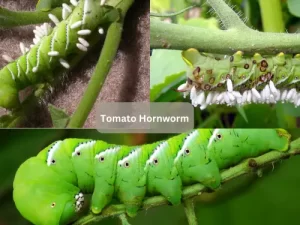
Symptoms and features: The Hornworm, a notorious tomato pest, can grow up to 4 inches long. These caterpillars are easily identified by their bright green color, V-shaped markings, and a prominent horn on their rear. They are voracious eaters, primarily targeting the upper parts of tomato plants, causing severe defoliation and even attacking the fruit.
Management: Effective management strategies include diligent plant inspection for early detection and handpicking the larvae. Biological control methods, such as introducing natural predators like birds and parasitic wasps, are beneficial. For organic control, Bacillus thuringiensis (Bt), a naturally occurring soil bacterium, can be applied to infested plants, effectively targeting the larvae while being safe for other wildlife and the environment.
Solution: To address Tomato Hornworm issues, employ BT Thuricide, a formulation of Bacillus thuringiensis. This biological approach offers a sustainable and effective alternative to synthetic insecticides.
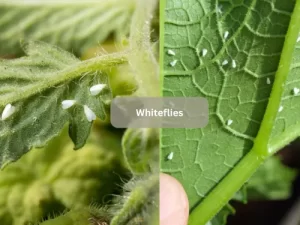
Symptoms and features: Whiteflies are tiny, white-winged insects that swarm in large numbers, particularly on the undersides of tomato plant leaves. These pests feed on the sap of the plants, leading to chlorosis (yellowing of leaves), tomato plant wilting, defoliation, and overall stunted growth.
Management: Managing whiteflies involves regular monitoring with yellow sticky traps to detect and reduce their population. Encouraging natural predators, such as ladybugs, can provide biological control.
Solution: For managing whitefly infestations, Beveria WP and Beauveria Bassiana serve as natural fungal biocontrol agents. These environmentally conscious options effectively diminish whitefly numbers, bypassing the need for chemical pesticides.
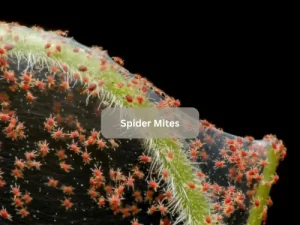
Symptoms and features: Spider Mites, particularly the Tetranychus species, are minuscule pests that pose a significant threat to tomato plants. They are so small that they often go unnoticed until significant damage has occurred.
Management: To manage spider mites, increasing the humidity around the plants can be beneficial, as mites thrive in dry conditions. Introducing predatory mites is an effective biological control method.
Solution: Tackle spider mite problems, opt for natural fungal agents such as Beveria WP. These green alternatives proficiently control spider mite populations, eliminating the dependence on synthetic pesticides.
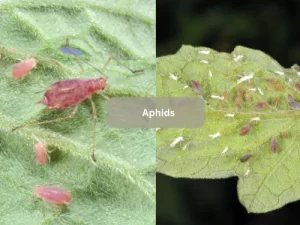
Symptoms and features: Aphids, particularly the Aphis species, are small, soft-bodied insects that come in various colors, including green, yellow, and black. They are among the most common tomato pests resulting in tomato plant wilting.
Management: Managing aphids effectively involves encouraging their natural predators, such as ladybugs, which can significantly reduce aphid populations. Applying insecticidal soaps or neem oil directly to the affected areas can also be effective.
Solution: For aphid control, consider employing Beveria WP and Beauveria Bassiana, natural fungal biocontrol agents. These sustainable methods effectively curtail aphid infestations, steering clear of chemical pesticides.
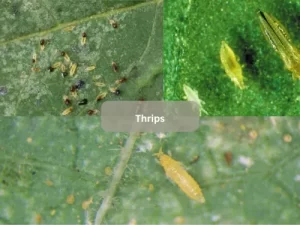
Symptoms and features: are small, slender insects with fringed wings, known for their damage to tomato plants. They cause stippling on leaves, disfigure flowers, and scar fruits, which can lead to significant crop loss. Thrips are also vectors for several plant viruses, adding to their threat.
Management: Effective management of thrips includes the use of blue sticky traps for monitoring their population. Introducing predatory mites can provide biological control.
Solution: To manage thrips infestations, turn to natural agents like Beauveria Bassiana, and Metarhizium anisopliae. These eco-friendly alternatives efficiently suppress thrips, avoiding the use of chemical pesticides.
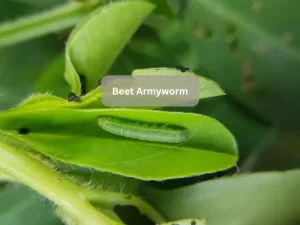
Symptoms and features: Larvae are greenish with light stripes and grow up to 1 inch. Adults are gray moths. They feed on leaves and fruits, causing defoliation and fruit damage.
Management: Monitor regularly and use biological control agents like parasitic wasps. Insecticides can be effective in severe infestations.
Solution: For beet armyworm control, BT Thuricide is recommended as natural solutions. These agents provide an effective, environmentally friendly alternative to conventional chemical pesticides.
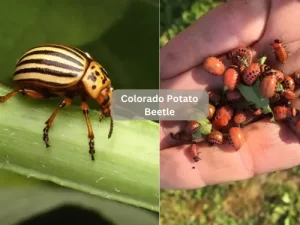
Symptoms and features: Yellow-orange beetles with black stripes on their wings and a black head. Larvae and adults feed on leaves, leading to significant defoliation.
Management: Handpick beetles and larvae. Use row covers and apply insecticides if necessary. Rotate crops to disrupt their life cycle.
Solution: To address Colorado Potato Beetle infestations, Myco Pestop, formulated by Metarhizium Anisopliae serves as an effective natural fungal biocontrol agent. This eco-conscious choice significantly diminishes beetle populations, bypassing the need for synthetic pesticides.
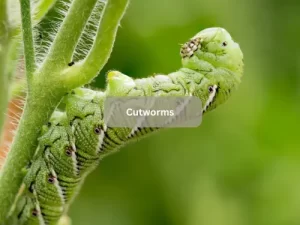
Symptoms and features: Gray or brown caterpillars that curl into a C shape when disturbed. Cutworms feed at night, cutting off young plants at the soil line.
Management: Use collars around seedlings for protection. Till the soil before planting to destroy larvae. Biological and chemical insecticides can be used for control.
Solution: For managing cutworm outbreaks, Met Zone and Metarhizium anisopliae emerges as a natural and effective solution. This environmentally sustainable option significantly curbs cutworm numbers, reducing reliance on chemical pesticides.
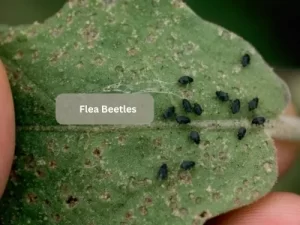
Symptoms and features: Small, dark beetles that jump when disturbed. They create small holes or pits in leaves, affecting plant vigor.
Management: Use row covers to protect young plants. Apply insecticides or use natural predators for control.
Solution: To tackle flea beetle infestations, consider Myco Pestop, formulated by natural biocontrol agents Metarhizium Anisopliae . These eco-friendly alternatives effectively manage flea beetle populations, avoiding the use of chemical pesticides.
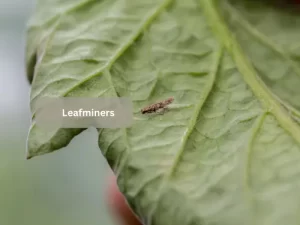
Symptoms and features: Small, yellow and black flies. Larvae are tiny, worm-like maggots. Larvae tunnel through leaves, creating distinctive white trails.
Management: Remove and destroy affected leaves. Use yellow sticky traps for adults. Insecticides can be applied for severe infestations.
Solution: To control leafminer infestations, BT Thuricide and Bacillus thuringiensis are effective natural choices. These solutions offer an eco-friendly alternative, efficiently targeting leafminers without the need for chemical pesticides.
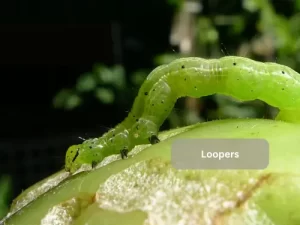
Symptoms and features: Green or brown caterpillars that move with a looping motion. They chew large, irregular holes in leaves.
Management: Handpick caterpillars. Use Bacillus thuringiensis (Bt) for biological control. Maintain good garden sanitation.
Solution: For looper control, opt for BT Thuricide which is natural and effective solutions. These environmentally sustainable options efficiently manage looper populations, minimizing the need for synthetic pesticides.
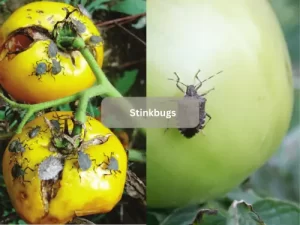
Symptoms and features: Shield-shaped bugs that emit a foul odor when disturbed. They pierce plant tissue, causing yellow and green splotches on fruits.
Management: Handpick bugs off plants. Use row covers and apply insecticides if infestations are heavy.
Solution: To manage stinkbug infestations, Beveria WP are recommended as natural fungal biocontrol agents. These eco-friendly methods effectively reduce stinkbug populations, offering an alternative to chemical pesticides.
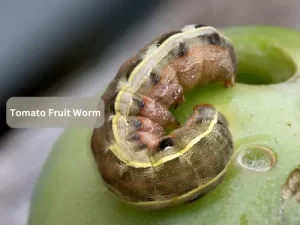
Symptoms and features: Also known as corn earworms, these caterpillars are variable in color. They bore into fruits, causing direct damage and making the fruit susceptible to rot.
Management: Monitor for moths using pheromone traps. Apply Bacillus thuringiensis (Bt) or other appropriate insecticides. Remove and destroy affected fruits.
Solution: BTI For combating Tomato Fruit Worm, BTI (Bacillus thuringiensis israelensis) serves as an effective natural solution. This environmentally friendly approach significantly controls worm populations, reducing the need for chemical pesticides.
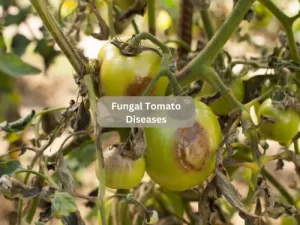
Symptoms and features: This fungal disease causes sunken, circular lesions on tomato fruits, often with concentric brown and yellow rings. It thrives in warm, wet conditions. Management includes practicing crop rotation, avoiding overhead irrigation during fruit ripening, and applying fungicides to prevent spread.
Management: To manage Anthracnose, implement crop rotation to prevent soil-borne spore buildup. Avoid overhead irrigation to reduce leaf wetness and apply fungicides as a preventive measure during periods of high humidity or rain.
Solution: To address tomato diseases, Trianum Shield emerges as a natural and effective treatment. This eco-conscious choice helps manage disease outbreaks, diminishing reliance on synthetic chemical treatments.
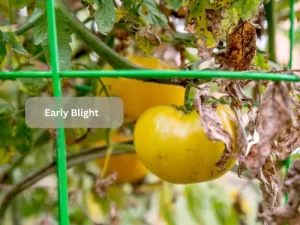
Symptoms and features: Characterized by dark spots with concentric rings on leaves, stems, and sometimes fruits, Early Blight can significantly reduce yield. Management involves removing infected plant debris, using fungicides, and planting disease-resistant varieties.
Management: Remove and destroy infected plant debris to reduce spore sources. Apply fungicides, especially during wet and humid conditions. Use disease-resistant tomato varieties and ensure adequate plant spacing for air circulation.
Solution: For early blight control, consider using Trianum V or Metilo, which are effective natural treatments. These environmentally friendly options efficiently manage early blight, reducing the need for traditional chemical fungicides.
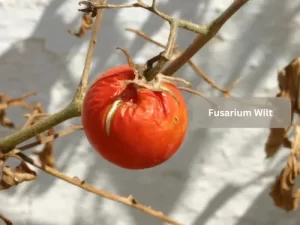
Symptoms and features: This soil-borne fungus causes yellowing and wilting of leaves, often starting on one side of the plant, leading to stunted growth. Management includes using resistant varieties, practicing crop rotation, and sterilizing the soil.
Management: Use Fusarium wilt-resistant tomato varieties. Practice crop rotation with non-host crops. Sterilize the soil before planting and ensure good drainage to reduce soil moisture levels.
Solution: To tackle Fusarium Wilt, Trianum Shield is a recommended natural and effective solution. This eco-friendly approach aids in controlling the disease, minimizing the dependence on chemical fungicides.
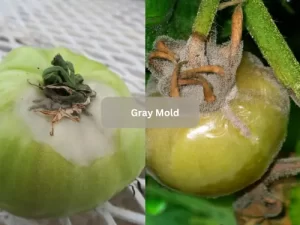
Symptoms and features: Gray Mold presents as gray, fuzzy mold on leaves, stems, and fruit, especially in cool, humid conditions. Management strategies include improving air circulation, reducing humidity, and applying appropriate fungicides.
Management: Improve air circulation around plants by spacing them adequately and pruning if necessary. Reduce humidity levels in the growing area. Apply fungicides suitable for Botrytis control, especially in greenhouses.
Solution: For managing gray mold, Trianum V or Metilo stand out as natural, effective options. These sustainable solutions efficiently combat mold growth, offering an alternative to conventional chemical fungicides.
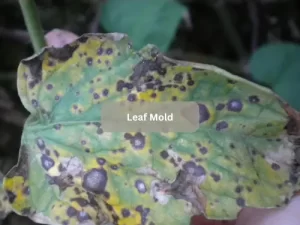
Symptoms and features: Leaf Mold causes yellow spots on the upper surfaces of leaves, with mold growth on the underside. It’s managed by ensuring adequate plant spacing, using resistant varieties, and applying fungicides when necessary.
Management: Ensure good air circulation by spacing plants properly. Use resistant tomato varieties. In humid or greenhouse conditions, apply fungicides that target leaf mold specifically.
Solution: To address leaf mold issues, consider Trianum V or Metilo as natural and effective treatments. These eco-friendly alternatives efficiently control leaf mold, reducing the need for chemical fungicides.
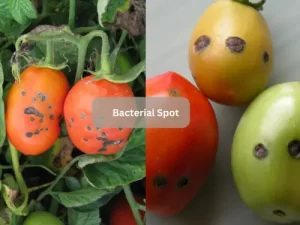
Symptoms and features: This disease causes small, water-soaked lesions on leaves, stems, and fruit, leading to reduced yield. Management includes using copper-based bactericides, planting resistant varieties, and avoiding overhead irrigation.
Management: Apply copper-based bactericides to control the spread. Use resistant tomato varieties and avoid working in the garden when plants are wet to prevent disease spread.
Solution: Bactonus For combating bacterial spot, Bactonus offers a natural and effective solution. This environmentally sustainable approach helps manage the disease, lessening reliance on chemical treatments.
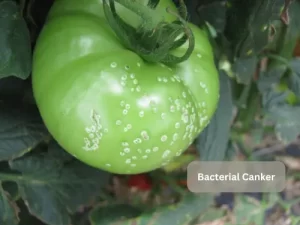
Symptoms and features: Symptoms include wilting, yellowing of leaves, cankers on stems, and bird’s eye spots on fruits. Management involves using disease-free seeds and transplants, practicing crop rotation, and maintaining good field sanitation.
Management: Use certified disease-free seeds and transplants. Practice crop rotation and good sanitation in the field. Remove and destroy infected plants immediately.
Solution: To tackle bacterial canker, Bactonus serves as a natural and effective remedy. This eco-conscious choice efficiently controls the disease, minimizing the need for synthetic chemical treatments.

Symptoms and features: ToMV causes mottled and distorted leaves, stunted growth, and malformed fruits. Management includes removing infected plants, controlling aphid vectors, and using virus-free seeds and transplants.
Management: Remove and destroy infected plants to prevent the spread. Control aphid populations as they can transmit the virus. Use virus-free seeds and transplants. Disinfect tools and equipment.
Solution: For managing Tomato Mosaic Virus, Bactonus is recommended as a natural, effective treatment. This environmentally friendly approach aids in controlling the virus, reducing dependence on chemical-based solutions.
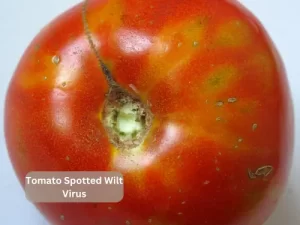
Symptoms and features: TSWV leads to bronze or dark spots on leaves, stunted growth, and ring spots on fruits. Management involves controlling thrips, removing infected plants, and using resistant varieties.
Management: Remove and destroy infected plants to prevent the spread. Control aphid populations as they can transmit the virus. Use virus-free seeds and transplants. Disinfect tools and equipment.
Solution: To address Tomato Spotted Wilt Virus, Bactonus emerges as a natural and effective option. This eco-conscious solution helps manage the virus effectively, avoiding the use of chemical treatments.
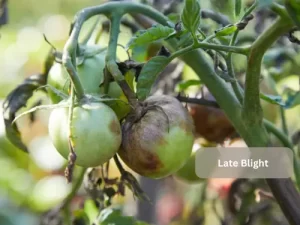
Symptoms and features: Late Blight causes dark, water-soaked spots on leaves and fruits, often with a white, downy growth underneath resulting in tomato wilt disease. Management includes applying fungicides regularly and using resistant varieties.
Management: Apply fungicides regularly, especially during cool, wet weather conditions. Use resistant tomato varieties. Destroy infected plants to reduce the source of spores.
Solution: For late blight control, Trianum V and Metilo are recommended as natural, effective treatments. These solutions offer an environmentally friendly approach, efficiently managing blight without resorting to chemical fungicides.
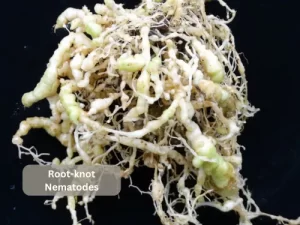
Symptoms and features: Root-knot nematodes cause galls on roots, stunted growth, and wilting. Management strategies include using nematicides, soil solarization, and planting nematode-resistant varieties.
Management: Use nematicides if available and applicable. Solarize the soil before planting to reduce nematode populations. Plant nematode-resistant tomato varieties. Rotate crops with non-host plants.
Solution: To combat root-knot nematodes, consider using Nema Pro or Nema Promax, which are effective natural solutions. These eco-friendly options efficiently reduce nematode populations, eliminating the need for chemical nematicides.
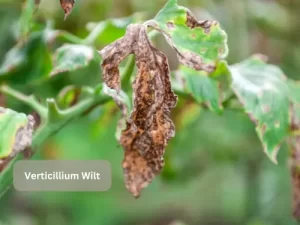
Symptoms and features: A soil-borne fungal disease causing yellowing, drooping, and browning of leaves, typically starting from the base. Management includes planting resistant varieties, rotating crops, and improving soil health and drainage.
Management: Plant Verticillium wilt-resistant tomato varieties. Rotate crops with non-host plants. Improve soil health and drainage to reduce the chances of disease. Avoid planting tomatoes in infested soil for several years.
Solution: For managing Verticillium Wilt, Cropium stands out as a natural and effective remedy. This environmentally sustainable choice helps control the wilt, reducing reliance on synthetic fungicides.
IPDM also involves a blend of culture, biology and chemical techniques. Regular monitoring, early detection and intervention are vital. The prevalence of pests and diseases can be greatly reduced with beneficial insects, healthy soil, and resistant varieties.
It is important that pests and diseases associated with tomatoes are well controlled if a satisfactory yield The knowledge of specific problems and a mixture of prevention, monitoring and control measures will result in better plants with higher outputs. Adopting sustainable practices fosters ecological balance and the sustainability of agricultural productivity in the long-term. Current threats demand continuous research and adaptation to maintain stable tomato production.

